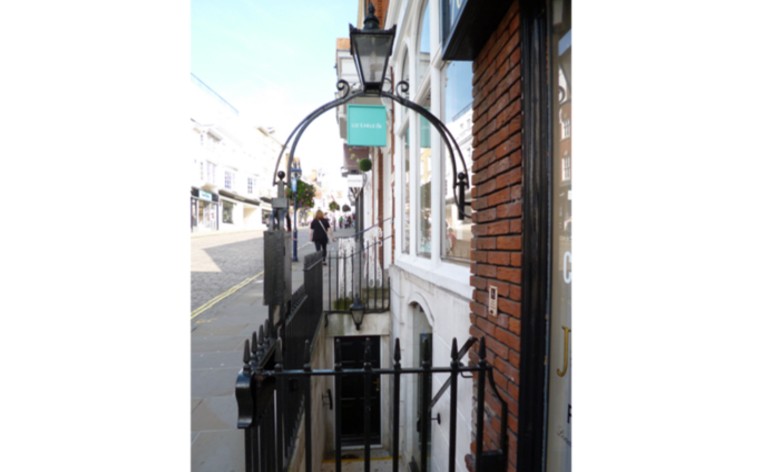An undercroft is traditionally a cellar or storage room, sometimes used as a kitchen or originally as a shop/store. It is often brick-lined and vaulted and would typically be used in medieval times for storage in buildings, but in modern times, it is generally a street-level area which is fairly open to the sides and covered by the building above. Undercrofts were commonly built in England throughout the thirteenth and early fourteenth centuries, in towns and cities that were engaged with profitable import and export trade such as London, Chester and Southampton. The most notorious undercroft would be the one that lies directly beneath the Houses of Parliament and was rented out to Guy Fawkes and the conspirators behind the Gunpowder Plot.
The Undercroft on Guildford High Street is a great example of how medieval undercrofts look as it is in such fine shape still. This stone vaulted semi-basement dates back to the end of the thirteenth century and it is believed that it was once a merchant’s shop, selling wine or expensive cloths or silk. The reasoning behind this is the extensive stonework and the carvings that can still be seen on the walls; these decorative pieces were surely intended for display purposes and not merely as embellishments to a cellar or storeroom.
The Guildford Undercroft has a rib-vaulted ceiling supported by two central columns and the corbels (stone brackets where the arches spring from the walls and support the roof above it) are carved in the shape of grotesque faces. One such example of this sculpture is the head of a woman wearing a folded headcloth, or wimple, in the style fashionable in the late 1200s. This sits by the stairs in the small room with an arrangement that meant the street frontage size could effectively be doubled by a short flight of steps up from the street led to another shop.
There are traces of perhaps half a dozen Undercrofts in Guildford, one being across the road beneath the Angel Hotel on the High Street. However, instead of this one being called an undercroft, it is rather misleadingly called ‘The Crypt’, which is the word used for undercrofts found underneath churches. Despite the vicinity, there is no truth in the popular tale that a secret tunnel links the two undercrofts together.
Undercrofts like this were a feature of towns engaged in the import and export trade, and the merchant who built this one must have expected to deal with prosperous clients who sought luxury goods. They were very expensive to build and only a rich merchant could afford the masonry work, indicating that Guildford was considered wealthy throughout the Middle Ages where the major industry was the export of a coarse blue cloth called kersey to parts of Europe. There is no definitive evidence linking the Guildford undercroft with the wool trade, however it is likely that there was some connection, possibly indirectly with the import of luxury goods like wine, attracted by the cloth dealer’s wealth.
The Undercroft has been used mainly for storage since the Middle Ages, but over the last hundred years it has stood empty for the majority of time. In 1989, work was carried out to unblock the street entrance and refurbish the interior for use as an Information Centre for visitors to the town which happened with very little alteration to the medieval structure. You can now go visit the Undercroft on Wednesdays and Saturdays between May and September as a tourist attraction on Guildford High Street.
James Martin


